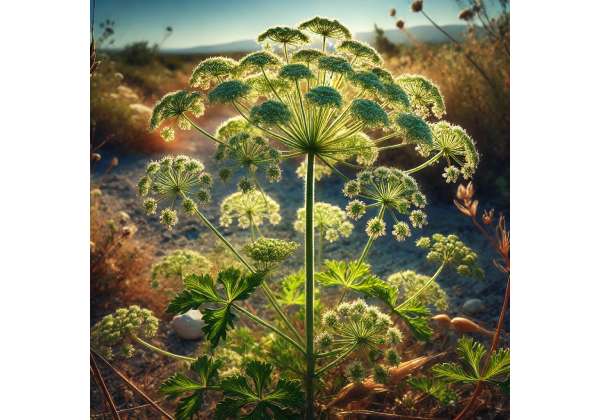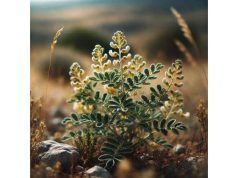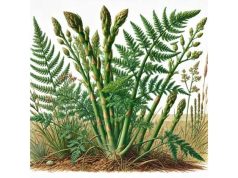Anise (Pimpinella anisum) is an aromatic annual herb belonging to the Apiaceae family that has been cherished for centuries for its unique licorice-like flavor and versatile applications in both culinary and medicinal traditions. Native to the Eastern Mediterranean region and Southwest Asia, anise has been cultivated and traded since ancient times, playing a key role in traditional remedies, spice trade, and cultural rituals. Its star-shaped seeds—renowned for their sweet, slightly spicy flavor—are used in a myriad of dishes, beverages, and herbal medicines. Modern research has begun to validate many of the traditional claims about anise’s benefits, which range from digestive support and antimicrobial activity to anti-inflammatory and antioxidant effects.
Anise is not only a prized culinary spice but also a potent medicinal herb known for its calming, digestive, and antimicrobial properties. Today, anise is used worldwide in everything from herbal teas and liqueurs to traditional medicines and natural remedies. Its enduring popularity is a testament to its multifaceted benefits and rich cultural history.
- Digestive support, including carminative and antispasmodic effects
- Antimicrobial and antioxidant properties that promote overall health
- Traditional uses in relieving coughs, colds, and mild respiratory discomfort
- Versatility in culinary, medicinal, and aromatic applications
Table of Contents
- Anise: Botanical Overview and Distinctive Characteristics
- Anise: Historical and Cultural Significance
- Anise: Key Phytochemicals and Nutritional Composition
- Anise: Health Benefits and Therapeutic Properties
- Anise: Uses, Applications, and Safety Guidelines
- Anise: Recent Scientific Research and Emerging Evidence
- Anise: Frequently Asked Questions
Anise: Botanical Overview and Distinctive Characteristics
Taxonomy and Classification
Anise, scientifically known as Pimpinella anisum, is a member of the Apiaceae family, which also includes carrots, parsley, and fennel. This herb is characterized by its delicate, feathery foliage and its star-shaped seeds, which are the primary part used both as a spice and in herbal medicine. Although anise is an annual, it grows rapidly under favorable conditions, producing its aromatic seeds within a single growing season.
Morphological Traits
- Leaves:
The leaves of anise are finely divided, light green, and airy, giving the plant a delicate, fern-like appearance. Their subtle fragrance complements the more intense aroma of the seeds. - Flowers:
Anise produces small, white or yellowish flowers arranged in umbels. These blossoms are not only attractive to pollinators but also contribute to the overall aesthetic of the plant in herb gardens. - Seeds:
The most prized component of anise, its seeds are small, oval, and star-shaped when viewed from the end. They possess a sweet, aromatic flavor reminiscent of licorice, which is why anise is a staple in both culinary and medicinal practices. These seeds contain essential oils rich in compounds such as anethole, which is responsible for their distinctive taste and potential health benefits.
Growing Conditions and Distribution
- Native Habitat:
Anise is native to the Eastern Mediterranean and Southwest Asia. Today, it is widely cultivated in many parts of the world, including Europe, North America, and the Middle East, due to its adaptability. - Soil and Climate:
This herb prefers well-drained, sandy or loamy soils and thrives in full sun. It tolerates moderate drought once established but grows best with consistent moisture. Its annual life cycle means that it completes its growth from seed to seed within a single season, making it an efficient crop for home gardeners and commercial producers alike. - Propagation:
Anise is typically grown from seeds. Sown in early spring, the seeds germinate quickly, and the plant matures rapidly, allowing for a single annual harvest of its aromatic seeds.
Anise’s attractive foliage, delicate umbels, and especially its star-shaped, aromatic seeds make it an invaluable herb in both the kitchen and the medicine cabinet. Its ease of cultivation and widespread adaptability contribute to its enduring popularity around the globe.
Anise: Historical and Cultural Significance
Ancient Origins and Early Trade
Anise has a rich history that dates back thousands of years. Archaeological and historical records suggest that anise was cultivated in ancient Egypt, Greece, and Rome, where it was used both as a culinary spice and for its medicinal properties.
- Egyptian and Greek Traditions:
In ancient Egypt, anise seeds were used in perfumery and as a flavoring agent in food. The Greeks appreciated anise for its aromatic qualities and incorporated it into a variety of dishes and medicinal concoctions. - Roman Influence:
The Romans, who inherited many of their culinary and medicinal practices from the Greeks, widely adopted anise. It was used to flavor wines and was believed to have digestive benefits, making it a valued commodity in the spice trade.
Medieval and Renaissance Uses
During the medieval period, anise continued to be a popular spice in Europe. It featured prominently in herbal remedies and culinary recipes.
- Herbal Medicine:
Medieval herbalists used anise to treat a variety of ailments, including digestive disorders, coughs, and even as a mild carminative to ease gas and bloating. Its use in folk medicine persisted throughout the Renaissance, as documented in numerous herbals and apothecary guides. - Culinary Applications:
Anise was also favored for its flavor, adding a sweet, licorice-like note to confections, breads, and wines. Its inclusion in many traditional recipes helped to enhance not only flavor but also the preservation of foods.
Global Dissemination and Modern Revival
- Expansion Through Trade:
As global trade routes expanded during the Age of Exploration, anise spread to the New World, where it was integrated into the culinary traditions of various cultures. - Contemporary Usage:
Today, anise is widely recognized as a versatile spice and herbal remedy. It is commonly used in Mediterranean, Middle Eastern, and Latin American cuisines. In addition, modern herbal supplements often feature anise extract for its potential digestive and antimicrobial benefits.
Throughout its long history, anise has been celebrated not only for its unique flavor but also for its numerous health benefits. The herb’s journey from ancient trade routes to modern kitchens and apothecaries illustrates its enduring legacy as a cherished botanical treasure.
Anise: Key Phytochemicals and Nutrient Composition
The effectiveness of anise is largely attributed to its rich profile of bioactive compounds. These phytochemicals not only give anise its characteristic aroma and flavor but also underpin many of its health-promoting properties.
Essential Oils
- Anethole:
The primary constituent of anise essential oil is anethole, which accounts for up to 80% of the oil’s composition. Anethole is responsible for the herb’s distinctive licorice flavor and has been shown to possess antimicrobial, antifungal, and anti-inflammatory properties. - Other Volatile Compounds:
Alongside anethole, compounds such as estragole, limonene, and fenchone contribute to the overall aroma and biological activity of anise. These volatiles are instrumental in stimulating digestion and may have mild sedative effects.
Flavonoids and Polyphenols
- Antioxidant Activity:
Anise contains flavonoids like quercetin and rutin, as well as various polyphenolic compounds. These antioxidants help neutralize free radicals, reduce oxidative stress, and may contribute to the prevention of chronic diseases. - Anti-Inflammatory Effects:
The combination of flavonoids and polyphenols can reduce inflammation, supporting the traditional use of anise in managing digestive and respiratory conditions.
Minerals and Vitamins
- Micronutrient Profile:
While anise is primarily valued for its aromatic and medicinal properties, it also contains small amounts of essential minerals such as calcium, iron, magnesium, and potassium. These contribute to overall health, though their quantities are relatively minor compared to its bioactive compounds. - Vitamin Content:
Anise offers trace amounts of vitamins, including vitamin C, which further bolster its antioxidant properties.
Dietary Fiber
- Digestive Support:
The seeds of anise contain dietary fiber that aids in digestion and helps maintain a healthy gastrointestinal tract. This fiber can support regular bowel movements and may help manage blood sugar levels by slowing carbohydrate absorption.
Synergistic Effects
The combined action of anethole, other essential oils, flavonoids, polyphenols, and dietary fiber creates a potent synergy that underlies anise’s traditional and modern uses. These components work together to promote digestive health, reduce inflammation, and support overall well-being, making anise a valuable addition to both culinary and herbal practices.
Anise: Notable Health Benefits and Therapeutic Properties
Anise’s health benefits have been recognized for centuries in traditional medicine systems and are increasingly supported by modern scientific research. Its multifaceted profile makes it a versatile herb for addressing a variety of health concerns.
1. Digestive Aid
- Carminative Effects:
Anise is well-known for its ability to stimulate the digestive system. It helps alleviate gas, bloating, and indigestion by promoting the secretion of digestive enzymes and easing the passage of food through the gut. - Appetite Stimulation:
The herb’s bitters and essential oils enhance appetite and support a healthy digestive process, making it useful for individuals experiencing sluggish digestion.
2. Antimicrobial and Antifungal Properties
- Pathogen Inhibition:
The high concentration of anethole in anise essential oil exhibits antimicrobial and antifungal activity. This makes anise effective in combating common pathogens in the digestive tract and in preserving food naturally. - Oral Health Support:
Traditional uses include chewing anise seeds to freshen breath and reduce oral bacteria, thereby supporting dental hygiene.
3. Antioxidant and Anti-Inflammatory Benefits
- Free Radical Scavenging:
Anise’s flavonoids and polyphenols contribute to its antioxidant capacity, helping to protect cells from oxidative damage and reduce inflammation. - Chronic Disease Prevention:
By mitigating oxidative stress, anise may help lower the risk of chronic conditions such as heart disease and certain cancers, although further research is needed.
4. Respiratory Support
- Relief from Coughs and Bronchitis:
In traditional medicine, anise tea is often consumed to ease respiratory symptoms. Its expectorant properties help clear mucus from the respiratory tract, alleviating coughs and bronchial irritation. - Soothing Effect:
The mild sedative properties of anise may also help relax the respiratory muscles and ease breathing during mild respiratory infections.
5. Hormonal and Menstrual Support
- Menstrual Relief:
Anise has been used traditionally to help relieve menstrual cramps and regulate menstrual cycles. Its mild antispasmodic properties can ease uterine contractions and reduce discomfort. - Hormonal Balance:
Some herbal practitioners believe anise may help balance female hormones, though modern clinical evidence is limited.
6. Anticancer Potential
- Preliminary Evidence:
Early laboratory studies suggest that anethole and other compounds in anise might inhibit the growth of certain cancer cell lines. While promising, these findings are preliminary and require further research to establish clinical relevance.
7. Overall Vitality and Wellness
- Immune Support:
The antioxidant and antimicrobial properties of anise can support the immune system, helping the body fend off infections. - Energy and Mood:
Anecdotally, some users report a subtle boost in energy and mood when incorporating anise into their diet, likely due to its ability to enhance digestion and nutrient absorption.
In summary, the benefits of anise range from digestive and respiratory support to antioxidant protection and potential hormonal regulation. These diverse therapeutic properties underpin its longstanding use in traditional medicine and contribute to its popularity in modern integrative health practices.
Anise: Practical Uses, Applications, and Safety Guidelines
Culinary Applications
- Fresh and Dried Leaves:
- Fresh anise leaves, with their delicate aroma, are commonly used as a garnish or added to salads and sauces. Dried leaves lose some of their potency but are still useful in seasoning blends.
- Anise Seeds:
- The seeds are the most widely used part of the plant. They are used whole or ground in baking, cooking, and beverage preparation. They impart a sweet, licorice-like flavor that is popular in breads, cookies, and spiced liqueurs.
- Essential Oil:
- Anise essential oil is extracted from the seeds and is used in aromatherapy, flavoring foods, and as a natural remedy in diluted form for digestive and respiratory issues.
Medicinal Preparations
- Herbal Tea:
- To prepare anise tea, steep 1–2 teaspoons of crushed anise seeds in a cup of boiling water for 10–15 minutes. This tea is traditionally consumed to ease digestion, reduce gas, and freshen breath.
- Tinctures and Extracts:
- Anise tinctures are made by steeping the seeds in alcohol or glycerin. Typical dosages are 10–20 drops diluted in water, taken 2–3 times daily.
- Capsules and Powders:
- Standardized extracts are available in capsule form. Dosages vary, but a common recommendation is 300–500 mg per day for digestive or immune support.
Dosage and Administration
- Culinary Use:
- Fresh or dried anise is safe in typical culinary amounts. It enhances flavor in a wide range of dishes.
- Herbal Supplements:
- When using concentrated extracts, follow manufacturer guidelines. A common dosage for anise extracts is 300–500 mg daily, or 10–20 drops of tincture taken 2–3 times a day.
- Herbal Tea:
- One to two cups daily is generally sufficient for digestive support.
Safety Considerations
- General Tolerance:
- Anise is generally well-tolerated when used in culinary amounts. High doses of concentrated extracts may cause gastrointestinal discomfort or allergic reactions in sensitive individuals.
- Pregnancy and Breastfeeding:
- Although anise is widely used in cooking, pregnant or breastfeeding women should consult with a healthcare provider before taking concentrated supplements.
- Medication Interactions:
- Anise has no widely reported severe drug interactions, but it may affect the absorption of certain medications if taken in high doses. Consult your doctor if you are on prescription medications.
- Quality and Purity:
- Purchase from reputable sources that verify the botanical identity (Pimpinella anisum) and provide standardized extracts free from contaminants.
Integrative Approaches
- Culinary and Medicinal Synergy:
- Incorporate anise into both your cooking and herbal regimen to enjoy its flavor and health benefits synergistically.
- Herbal Blends:
- Anise is often combined with other digestive herbs like fennel, ginger, or mint to enhance its carminative and antimicrobial effects.
- Aromatherapy:
- Use anise essential oil in diffusers to enjoy its refreshing aroma and potential mood-enhancing effects.
By adhering to these guidelines and using high-quality, properly standardized products, anise can be safely incorporated into your daily routine, providing both culinary pleasure and potential health benefits.
Anise: Recent Scientific Research and Emerging Evidence
Recent research has begun to validate many of the traditional claims associated with anise, focusing on its digestive, antimicrobial, and antioxidant properties.
1. Digestive Health and Carminative Effects
- Study (2016), Journal of Ethnopharmacology:
An in vitro study demonstrated that anise seed extracts significantly stimulate digestive enzyme activity and reduce gas formation. These results support traditional uses of anise tea to alleviate indigestion and bloating.
2. Antimicrobial and Antifungal Activity
- Research (2017), Food Control:
Researchers found that the essential oil of anise, particularly its anethole component, exhibits strong antimicrobial effects against common foodborne pathogens and certain fungal species. This suggests its potential use as a natural preservative in food systems.
3. Antioxidant Capacity
- Paper (2018), Phytotherapy Research:
Anise extracts have been shown to possess significant antioxidant properties, as measured by free-radical scavenging assays. The flavonoids and polyphenols present in anise contribute to reducing oxidative stress, which may have implications for chronic disease prevention.
4. Respiratory Benefits
- Clinical Pilot (2019), Complementary Therapies in Medicine:
A small clinical trial investigated the use of anise tea in patients with mild respiratory symptoms. Participants reported reduced cough intensity and improved breathing, likely due to anise’s expectorant properties.
5. Safety and Tolerability
- Review (2020), Evidence-Based Complementary and Alternative Medicine:
A review of various studies on anise concluded that when used in typical culinary or medicinal doses, anise is generally safe and well-tolerated. High concentrations may lead to gastrointestinal disturbances, underscoring the importance of proper dosing.
Anise: Frequently Asked Questions
Is anise safe for daily culinary use?
Yes, anise is widely used in cooking and is considered safe in typical culinary amounts. Its essential oils and aromatic compounds are beneficial and pose little risk when used as a spice.
Can anise help with digestive issues?
Anise is traditionally used as a carminative to relieve gas, bloating, and indigestion. Its essential oils stimulate digestive enzymes, making it a common ingredient in herbal teas for digestive support.
How do I prepare anise tea?
To prepare anise tea, crush 1–2 teaspoons of anise seeds and steep them in boiling water for 10–15 minutes. Strain and sweeten with honey or lemon if desired. Drinking one to two cups daily can help support digestion.
Are there any precautions with using anise supplements?
Anise is generally safe; however, concentrated supplements should be used according to recommended dosages. Pregnant or breastfeeding women and individuals on medication should consult a healthcare provider before use.
Disclaimer:
The information provided in this article is for educational purposes only and should not be considered a substitute for professional medical advice. Always consult a qualified healthcare provider before starting any new herbal regimen, especially if you have pre-existing conditions or are taking prescription medications.
If you found this comprehensive guide on Anise useful, please share it on Facebook, X (formerly Twitter), or your favorite social media platform. Spreading the word helps others discover the rich benefits of this time-honored herb!

















